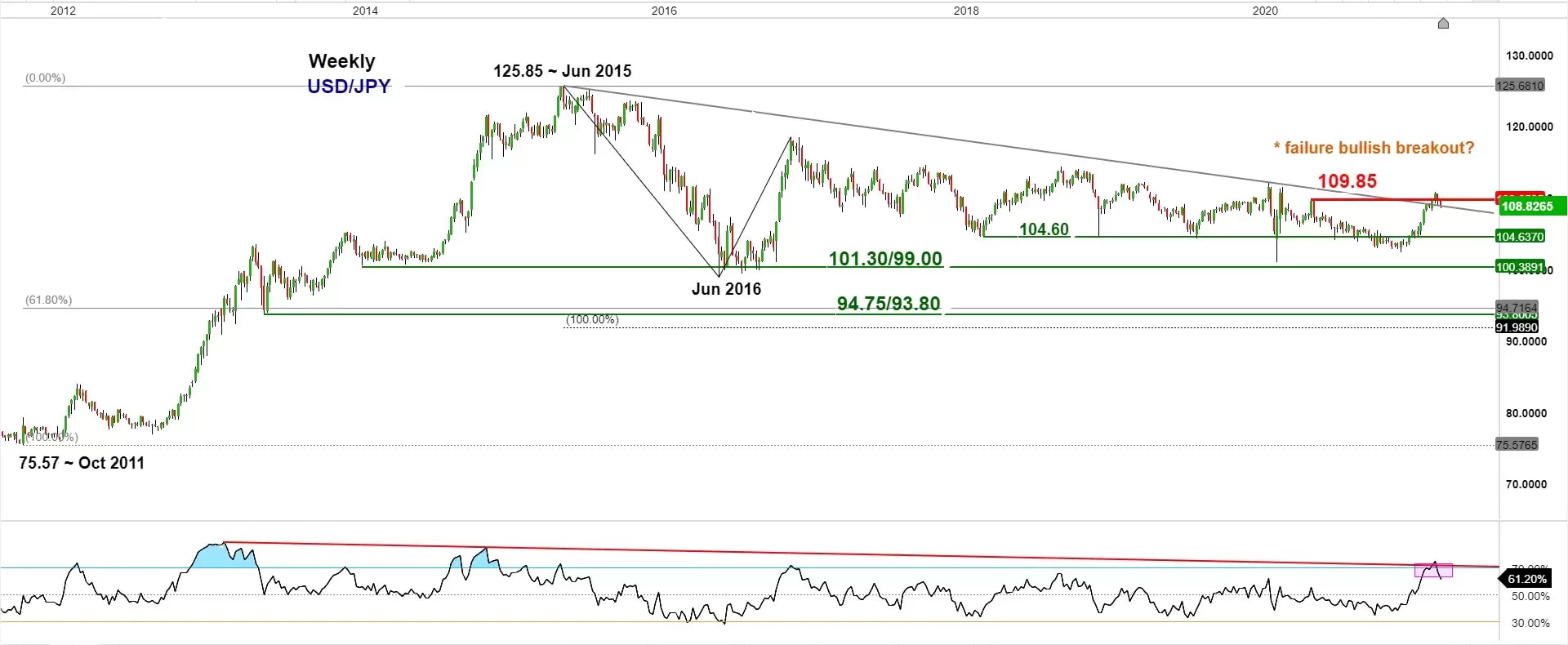The US dollar has failed to make any significant tailwinds to the upside in recent days, despite a spate of strong US economic data releases in the past four days, that suggest the US economy roared back to life in March.
Since a recent high of 93.44 printed on 31 March, the US Dollar Index has declined by -2.08% to record a low of 91.49 on 15 April, which indicates broad-based USD weakness against the major currencies in general.
The US consumer price index for March showed that core inflation rose 1.6% year-on-year, beating consensus estimates of 1.5% and surpassing the readings of 1.3% and 1.4% for February and January respectively. In addition, retail sales for March blew aywa the consensus estimate of 5.9%, increasing by 9.8% month-on-month versus the -2.7% recorded for February, its strongest pace of growth since May 2020. Also, weekly initial jobless claims decreased to 576,000 from 769,000, its lowest four-week average reading since March 2020 when the pandemic started.
It's likely that such positive US data has already been discounted in the foreign exchange market, as most media reports published at the start of April have indicated a strong economic recovery for March. In fact, the US 10-year Treasury yield already started to price in such economic recovery optimism much earlier, when it rose by 77 basis points (bps) from a 27 January low of 1.00% to a high of 1 77% on 31 March. This is its steepest pace of increase in terms of bps versus its previous significant up move, recorded from the 4 August 2020 low to 12 January 2021 high. From a technical analysis perspective, the daily relative strength index (RSI) of the US 10-year Treasury yield reached an extreme overbought level of 78% on 25 February and exhibited a bearish divergence signal thereafter, which increases the odds of a pull-back after a sharp rally in place since the 27 January low of 1%.
Net short speculative positioning on the US Dollar Index declined by $6.10bn in the week ended 6 April, from $8.22bn reported in the previous week, according to data released from the Commodity Futures Trading Commission. On average, the USD net shorts position seems to be now worth around 2% of open interest versus a peak of 19% on 19 January. From a contrary perspective, a fall in net short speculative positioning (unwinding of previous elevated open short positions in the US dollar) is unlikely to be able to produce any potential significant short squeeze on existing short US dollar positions, so the effect is cancelled out.
Chart of the day - USD/JPY
Look out for the potential failure of a bullish breakout if the weekly close is below 109.85.

source: CMC Markets
Disclaimer: CMC Markets Singapore may provide or make available research analysis or reports prepared or issued by entities within the CMC Markets group of companies, located and regulated under the laws in a foreign jurisdictions, in accordance with regulation 32C of the Financial Advisers Regulations. Where such information is issued or promulgated to a person who is not an accredited investor, expert investor or institutional investor, CMC Markets Singapore accepts legal responsibility for the contents of the analysis or report, to the extent required by law. Recipients of such information who are resident in Singapore may contact CMC Markets Singapore on 1800 559 6000 for any matters arising from or in connection with the information.








